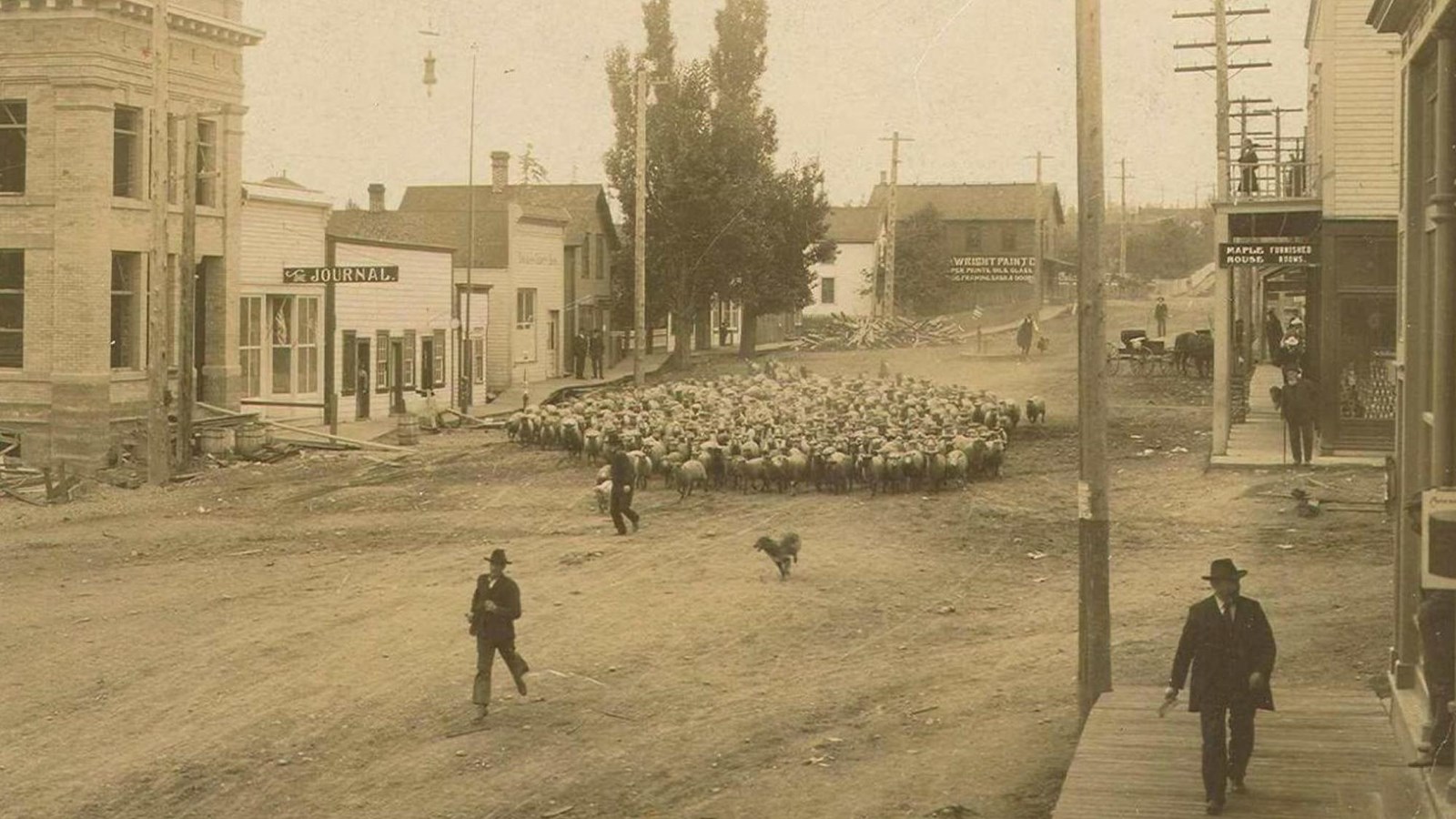Last updated: August 6, 2022
Place
The Cowichan Road

Quick Facts
Location:
Friday Harbor, WA
Significance:
First Local Road Network
On Monday, April 10th, the Belle Vue Sheep Farm Journal, kept by Charles Griffin read: “Five Cowichins (Cowichans) who I engaged yesterday….opening a road in the center of the Island to get to Prairies in order to extend our sheep run. Skachets (Skagits) carrying plank, shingles, & C.” These Cowichans, First Nations people from Vancouver Island, were hired as labor contractors by the Hudson’s Bay Company to construct the first road network on San Juan Island. The Cowichan Road connected the various prairies on San Juan Island, effectively serving as a sheep run that enabled San Juan Island to serve as a massive farm housing over 4,000 sheep.
Griffin’s journal makes clear the extent to which Native American workers made the Hudson’s Bay Company’s farm possible. In less than 30 days in the spring of 1854, some of the entries in his journal read: “Cowitchins (6) at road” “For Skatchets carrying small gravel” “Two Chimsians (Tshimshians) &1 Skatchet, making a park for cattle” “3 Skatchets & 4 Cowitchins opening another Road” “Chimsians and 3 Klalams (Klallams) finished road” “All Indians Variously Employed.” Griffin expressed frustration with Coast Salish people who strictly enforced the terms of their labor contract, calling them “rascals” for leaving his service when “their time was up.” Nonetheless, within two days of these complaints, Griffin hired new Native Americans to help construct his large farm, suggesting that though he was their employer, Griffin relied far more on Coast Salish people than they relied upon him.
The Hudson’s Bay Company’s first activities on San Juan Island relied upon indigenous labor and knowledge. In 1853, this English company sent operatives to the salmon fishery located near present day American Camp to purchase, preserve, and export excess salmon from Coast Salish fishermen who had long ago developed a technologically advanced fishery. Though Coast Salish people did not possess sheep, they had successfully bred a variety of wooly dogs which they raised on San Juan Island for their fur, an activity not that different from the sheep raising that took place on the Belle Vue Sheep Farm. On that farm, many of the shepherds were Coast Salish people or were Hawaiians married to indigenous people like Po`alima (Peter Friday). This was also true for early American settlers and military members, such as Lyman Cutlar and George Pickett, who formed families with indigenous women in the Salish Sea region.
During the Pig War period, American and British soldiers continued to improve the Cowichan Road, rerouting and transforming it into the Old Military Road which connected American Camp and English Camp. After San Juan Island was declared American territory in 1872, homesteaders began to formally claim Coast Salish homelands on San Juan Island for farms of their own, starting at American Camp, English Camp, and in the San Juan Valley in the interior of the island. As this 1906 photograph of sheep being herded to Friday Harbor to be taken off island demonstrates, the road network that the Cowichan people first constructed provided a way to get settlers' produce to markets off island and to bring vital resources to their isolated homes.
Griffin’s journal makes clear the extent to which Native American workers made the Hudson’s Bay Company’s farm possible. In less than 30 days in the spring of 1854, some of the entries in his journal read: “Cowitchins (6) at road” “For Skatchets carrying small gravel” “Two Chimsians (Tshimshians) &1 Skatchet, making a park for cattle” “3 Skatchets & 4 Cowitchins opening another Road” “Chimsians and 3 Klalams (Klallams) finished road” “All Indians Variously Employed.” Griffin expressed frustration with Coast Salish people who strictly enforced the terms of their labor contract, calling them “rascals” for leaving his service when “their time was up.” Nonetheless, within two days of these complaints, Griffin hired new Native Americans to help construct his large farm, suggesting that though he was their employer, Griffin relied far more on Coast Salish people than they relied upon him.
The Hudson’s Bay Company’s first activities on San Juan Island relied upon indigenous labor and knowledge. In 1853, this English company sent operatives to the salmon fishery located near present day American Camp to purchase, preserve, and export excess salmon from Coast Salish fishermen who had long ago developed a technologically advanced fishery. Though Coast Salish people did not possess sheep, they had successfully bred a variety of wooly dogs which they raised on San Juan Island for their fur, an activity not that different from the sheep raising that took place on the Belle Vue Sheep Farm. On that farm, many of the shepherds were Coast Salish people or were Hawaiians married to indigenous people like Po`alima (Peter Friday). This was also true for early American settlers and military members, such as Lyman Cutlar and George Pickett, who formed families with indigenous women in the Salish Sea region.
During the Pig War period, American and British soldiers continued to improve the Cowichan Road, rerouting and transforming it into the Old Military Road which connected American Camp and English Camp. After San Juan Island was declared American territory in 1872, homesteaders began to formally claim Coast Salish homelands on San Juan Island for farms of their own, starting at American Camp, English Camp, and in the San Juan Valley in the interior of the island. As this 1906 photograph of sheep being herded to Friday Harbor to be taken off island demonstrates, the road network that the Cowichan people first constructed provided a way to get settlers' produce to markets off island and to bring vital resources to their isolated homes.
